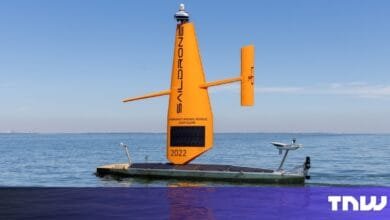Light-Based Sensors Protect Europe from Subsea Threats

▼ Summary
– Dutch company Optics11 developed OptiBarrier, an underwater monitoring system using light waves to detect submarines, drones, and vessels up to 150km away without revealing its position.
– Unlike traditional electromagnetic methods, OptiBarrier uses fiber optic sensors to detect sound waves, making it undetectable and immune to jamming.
– The system analyzes acoustic data against a military database to identify vessel types and models, providing navies with early threat warnings while remaining hidden.
– OptiBarrier has been tested in The Hague and will debut in Europe amid rising maritime security concerns post-Russia’s Ukraine invasion.
– Optics11 also created OptiArray, a submarine-mounted version of the tech, currently being tested by the Royal Netherlands Navy for integration by 2032.
A revolutionary underwater monitoring system is transforming maritime security across Europe by using light waves to detect potential threats without revealing its own position. Developed by Dutch tech firm Optics11, the OptiBarrier system can identify enemy submarines, drones, and surface vessels from distances up to 150 kilometers, all while remaining completely undetectable.
Unlike traditional underwater surveillance methods that rely on electromagnetic pulses, which can be intercepted or jammed, OptiBarrier operates using fibre optic sensors. These sensors detect minute pressure changes caused by sound waves from passing vessels, translating them into data through light modulation. The information is then transmitted via secure cables to onshore facilities, where advanced software analyzes the acoustic patterns.
“We listen with light,” explains Paul Heiden, CEO of Optics11. “This makes our system immune to jamming and invisible to adversaries.” The technology cross-references detected sounds against a classified military database, often identifying not just the type of vessel but sometimes even its specific model. This capability provides navies and coastal authorities with a critical tactical edge, offering early warnings without alerting potential threats.
Recent tests at the Seabed Security Experimentation Centre (SeaSEC) in The Hague have validated the system’s effectiveness. While Optics11 remains tight-lipped about exact deployment schedules, the urgency for such technology has grown significantly since Russia’s invasion of Ukraine. Concerns over subsea infrastructure vulnerabilities, including undersea cables, wind farms, and pipelines, have accelerated investments in maritime defense across Europe.
In addition to OptiBarrier, Optics11 has introduced OptiArray, a specialized version of the technology designed for submarines and underwater drones. Mounted directly on a vessel’s exterior, OptiArray enables stealthy threat detection without compromising the host vehicle’s concealment. The Royal Netherlands Navy is currently testing this system, with plans to integrate it into its next-generation submarines by 2032.
As geopolitical tensions escalate, Europe’s focus on undetectable, resilient surveillance solutions is reshaping underwater defense strategies. Optics11’s innovations represent a major leap forward in securing critical maritime assets while maintaining operational secrecy.
(Source: The Next Web)

